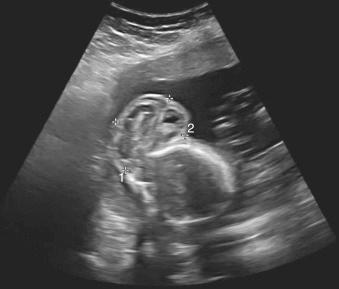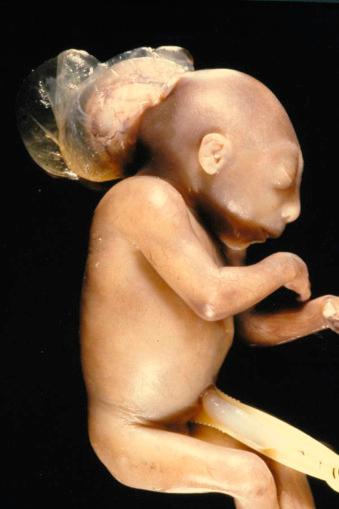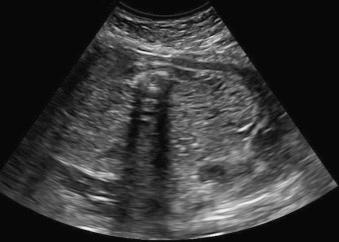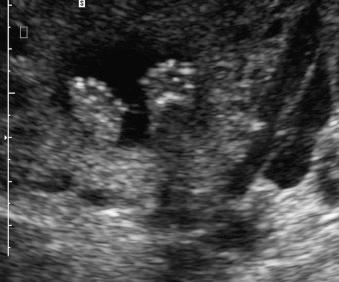Physical Address
304 North Cardinal St.
Dorchester Center, MA 02124
Meckel-Gruber syndrome, also known as Meckel syndrome or Gruber syndrome, is a severe ciliopathy. This developmental disorder was first described by Meckel in 1822 and later by Gruber in 1934. The minimum diagnostic criteria are controversial because the clinical manifestations of the syndrome are highly variable. The classic triad consists of a central nervous system malformation, typically occipital encephalocele; cystic kidneys; and polydactyly, most commonly postaxial. Fraser et al. reviewed affected siblings of probands, and proposed broadening the diagnostic criteria to include cystic kidney disease plus two or more frequently seen anomalies. Salonen et al. suggested including hepatic abnormalities in the triad instead of polydactyly.
Most affected individuals die in utero , or mothers elect for termination of pregnancy. The postnatal mortality is 100% for individuals who survive to birth, with the longest survivor dying at 28 months. The major causes of death are pulmonary hypoplasia from oligohydramnios and liver disease.
Twelve genetic mutations are associated with Meckel-Gruber syndrome (designated MKS1 through MKS12). There is variable expressivity of the condition within families. Genotype-phenotype interactions have been noted; for example, polydactyly and encephalocele are commonly identified in individuals with MKS1 mutations but are rarer in individuals with MKS3 mutations. In all cases, this disorder has shown autosomal recessive inheritance.
Meckel-Gruber syndrome is considered in an individual with a normal karyotype who has at least two of the three classic features: occipital encephalocele ( Figs. 133.1 and 133.2 ); large, polycystic kidneys ( Fig. 133.3 ); and postaxial polydactyly ( Fig. 133.4 ).




The prevalence of this disorder is not well established because of its early fatality and similarity to other diseases. The worldwide incidence ranges from 1 : 1300 in Gujarati Indians to 1 : 140,000 in England. Although the disease occurs in all ethnic groups, there appear to be certain ethnicities in which this disorder is more common. Barisic et al. in a recent population-based study reported an incidence of 1 : 38,615 births in Europe. The incidence in Finnish populations is approximately 1 : 9000. Meckel-Gruber syndrome also is more common in individuals of Belgian, Pakistan, Kuwait, and Israeli-Jewish descent. A higher prevalence has been reported when consanguinity is present. There is no predilection for gender because the male-to-female ratio is equivalent.
Several genetic loci have been identified in individuals with Meckel-Gruber syndrome. The disorder is caused by dysfunction of primary cilia during embryogenesis. It is believed that heterozygous mutations in the associated genes cause disruption in mediation of ciliary development and epithelial morphogenesis, leading to the multitude of malformations identified in affected individuals.
Become a Clinical Tree membership for Full access and enjoy Unlimited articles
If you are a member. Log in here